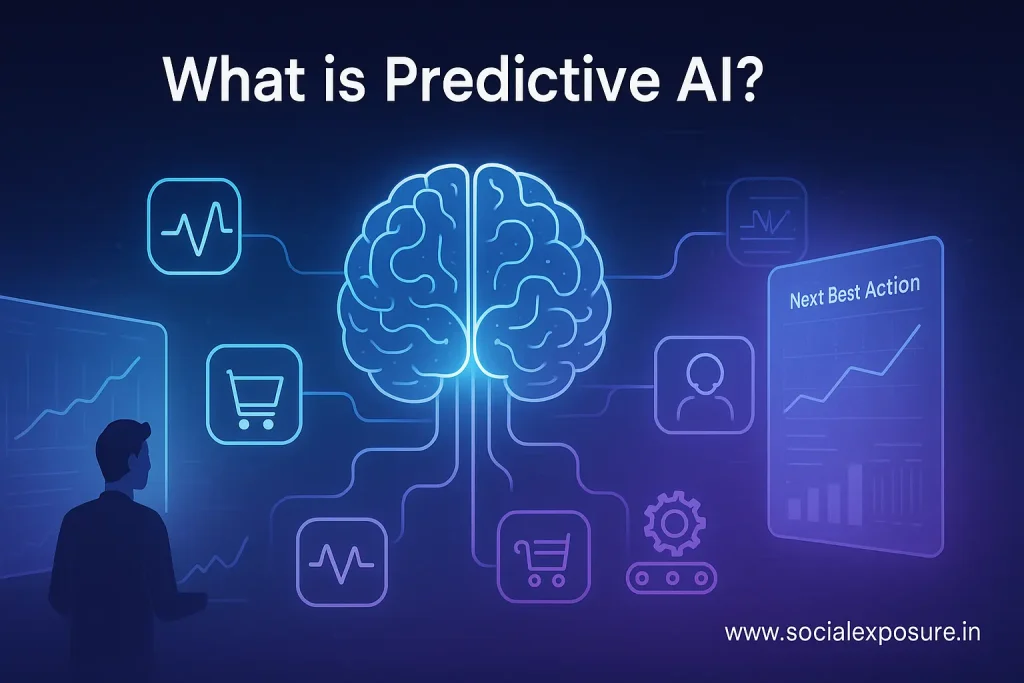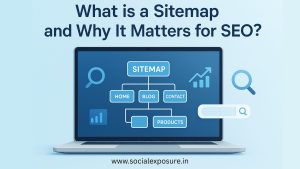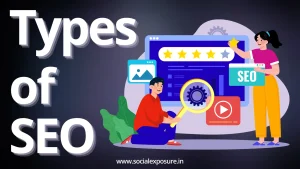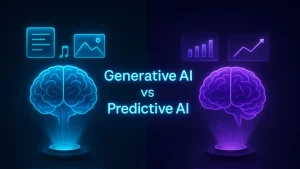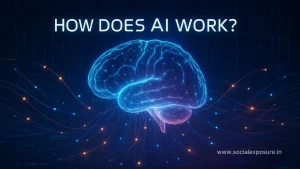Everyone’s talking about AI, but not everyone knows how it’s shaping real decisions. From suggesting what you might want to watch next to helping forecast a product’s demand next month, artificial intelligence is no longer just a tech trend it’s becoming part of how we operate daily.
One of the most practical ways AI works behind the scenes is through what’s known as predictive AI. This branch of AI doesn’t just process data; it uses patterns to anticipate what might happen next. Whether you’re a business owner trying to forecast sales or a student curious about how machines make decisions, understanding predictive AI is a step forward in learning how technology can work smarter.
In fact, according to a report by McKinsey & Company, By 2030, companies that move early and fully absorb AI tools could double their cash-flow levels, while those that fail to adopt them might see cash-flow levels fall by about 20 percent. That kind of impact explains why predictive systems are being explored not just in business, but also in areas like healthcare, agriculture, and public infrastructure.
Let’s break it down step by step right here with Social Exposure, where clarity meets real answers.
What is Predictive AI?
Predictive AI is a type of artificial intelligence that analyzes existing data to estimate future outcomes. It uses historical trends and behavioral patterns to predict what is likely to happen next. The purpose of predictive AI is to support informed decision-making by reducing uncertainty.
This technology is commonly used across industries like healthcare, finance, marketing, manufacturing, and e-commerce. For example, businesses use predictive AI to forecast sales, detect fraud, manage supply chains, and personalize customer experiences.
A report by Statista shows that the global AI software market is expected to reach over 126 billion U.S. dollars by 2025, with a significant share being used for predictive analytics and forecasting tools. This shows that predictive AI is becoming a core component in how companies plan and optimize operations.
An everyday example of predictive AI is the recommendation engine used by streaming platforms. These systems analyze your past viewing habits and suggest content you’re likely to watch next. The same logic is applied in customer service, logistics, and advertising to improve results.
Teams like Social Exposure, known as the Best Digital Marketing Agency, often apply predictive AI tools to improve campaign targeting and analyze customer behavior in real time.
How Predictive AI Works?
Predictive AI works by analyzing existing data to identify patterns and estimate future results. It uses statistical techniques to recognize trends and detect signals within past information. Instead of creating new content, predictive systems estimate the likelihood of what might happen next, based on what has already occurred.
The system focuses on measurable outcomes. Whether it’s forecasting customer actions, sales performance, or equipment failures, predictive AI systems rely on available data to suggest the most probable next steps.
Basic Process of Prediction Using AI
Here’s a simplified flow of how predictive AI models operate:
- Data Collection: Raw information is gathered from various sources such as past sales, user behavior, or historical transactions.
- Pattern Analysis: The data is processed to detect recurring trends, connections, or outliers.
- Prediction Output: Based on the patterns found, the system generates likely outcomes or future behavior scenarios.
This process helps companies make informed choices, reduce risks, and improve accuracy across different tasks.
Does Predictive AI Learn Like Other AI Models
Predictive AI learns by being trained on large sets of historical data. Unlike generative systems that create new content, predictive AI models focus on calculating the probability of specific outcomes.
It uses structured learning from past input to generate forecasts, not new ideas. This means the model doesn’t invent or imagine; it observes, calculates, and predicts based on evidence.
The types of predictive models often used include classification, regression, and time-series models. Each serves a different purpose depending on the nature of the prediction needed.
Predictive AI vs Predictive Analytics
Predictive AI and predictive analytics both aim to estimate future outcomes using past data, but they work differently. Predictive AI relies on advanced AI and machine learning techniques to recognize complex patterns and adjust over time. In contrast, predictive analytics is rooted in statistical models and historical trend analysis, often requiring manual updates.
While both are useful for forecasting, predictive AI offers more flexibility and scalability in handling dynamic, large-scale data sets.
Key Differences You Should Know
Feature | Predictive AI | Predictive Analytics |
Core Technology | Machine learning and AI models | Traditional statistical methods |
Learning Capability | Improves with new data over time | Limited or static unless updated manually |
Adaptability | Adjusts automatically to data changes | Relies on predefined rules and logic |
Complexity of Patterns | Handles large and complex datasets | Suitable for simpler, structured data |
Automation Level | High | Moderate to low |
Use Cases | Dynamic decision-making, personalization | Business reporting, trend forecasting |
Both approaches have value, but predictive ai is more suitable for real-time environments where data changes rapidly and needs immediate response.
Types of Predictive AI Models
Different predictive ai models are used depending on the kind of outcome being estimated. These models help businesses, platforms, and service providers make informed choices by analyzing patterns in data.
Below are the most common and practical types of predictive models used across industries.
Classification and Regression Models
- Classification Models: These models sort data into categories. A common example is spam detection in email systems. The model decides whether a message is spam or not based on past patterns.
- Regression Models: These models estimate numerical values. For example, predicting next month’s sales figures based on previous performance is done through regression.
Both models are used where historical data can help guide current decisions, especially in areas like customer segmentation, lead scoring, and fraud detection.
Time Series Models
Time series models are designed to make predictions over a timeline. They are useful when past trends influence future values.
Common uses include:
- Forecasting inventory needs
- Predicting stock market behavior
- Estimating future website traffic
- Managing seasonal supply chain planning
These models work by examining data collected at consistent intervals to project future trends or requirements.
These predictive ai models are used across industries including agencies like Social Exposure, where data-driven planning is key to campaign and performance optimization.
Where is Predictive AI Used Today?
Predictive AI is widely adopted across industries to solve problems and improve decision-making. It helps reduce guesswork, improve accuracy, and increase efficiency by forecasting outcomes based on data patterns.
Here are some of the most active sectors using predictive ai today.
E-commerce and Customer Behavior
In e-commerce, predictive ai is used to:
- Recommend products based on browsing and purchase history
- Forecast inventory needs during peak seasons
- Predict customer churn and take preventive action
- Personalize offers based on user behavior
This use of ai in e-commerce allows online retailers to offer more relevant experiences, reduce waste, and improve customer loyalty.
Healthcare and Patient Monitoring
In healthcare, predictive systems are helping professionals by:
- Identifying patients at risk based on historical medical records
- Supporting diagnosis with early warning signals
- Predicting disease progression or response to treatment
- Managing hospital resources based on expected patient volume
Using ai in healthcare enables better clinical decisions and improves care efficiency without increasing operational burden.
Marketing and Ad Targeting
In the marketing space, predictive ai supports:
- Audience segmentation based on behavior and demographics
- Predicting campaign performance before launch
- Optimizing ad spend using real-time performance trends
- Re-engaging inactive users through personalized content
The impact of ai in marketing is clear in performance-driven environments, where conversion and targeting matter most.
Many digital-first brands like Social Exposure are already integrating predictive models into campaigns to improve engagement and planning.
Benefits of Predictive AI for Businesses
Predictive ai gives companies practical tools to make faster, smarter decisions using data. Instead of reacting to problems after they happen, businesses can use AI to anticipate challenges and take action in advance. Below are the key benefits that matter most to startups, founders, and decision-makers.
Better Decision-Making with Less Guesswork
Using ai for business helps reduce uncertainty by relying on past data and trends to guide decisions. This allows leaders to:
- Predict customer demand and adjust inventory
- Spot performance issues before they escalate
- Prioritize tasks based on real-time insights
- Set realistic goals grounded in measurable trends
By shifting from assumptions to evidence, businesses gain more control over outcomes and planning.
Saving Time and Cost with Automation
Predictive ai tools streamline operations by automating tasks that used to require manual work. This includes:
- Automating report generation and forecasting
- Reducing time spent on low-value decision loops
- Identifying cost-saving opportunities through data patterns
- Enhancing productivity across teams with better resource allocation
Businesses that implement predictive tools often see better output with fewer resources, making them more agile and competitive in their industries.
Agencies like Social Exposure apply these tools to optimize campaign planning and performance monitoring with minimal manual effort.
Challenges of Predictive AI
While predictive AI brings useful tools to many industries, it is not without limitations. These challenges mainly revolve around the quality of data and how results are interpreted. Understanding these concerns helps businesses use AI more responsibly and effectively.
Need for Good Data and Constant Updates
The accuracy of predictions depends heavily on the quality and freshness of data. Poor data inputs often result in poor outputs. Real challenges include:
- Incomplete or outdated datasets
- Biased historical information
- Inconsistent data collection methods
- Lack of context or real-time updates
To keep systems relevant, businesses must continuously monitor and update their data sources. Otherwise, AI limitations become more visible, and predictions lose their value.
Risk of Misinterpretation
Another concern with predictive AI is relying too heavily on the outcome without understanding the reasoning behind it. Some risks include:
- Overconfidence in predictions without human review
- Misreading probability as certainty
- Ignoring changing market conditions or context
- Using predictions in areas where data is unreliable
AI should support decisions, not replace human thinking. Predictions are helpful signals, but not guarantees. Training teams to interpret results correctly is essential.
These common predictive AI challenges highlight the importance of aligning technology with responsible data use and critical thinking.
Is Predictive AI the Future of AI?
Predictive AI is becoming a central part of how organizations plan, operate, and compete. Its ability to turn data into meaningful forecasts is making it valuable across industries. While not the only form of AI, it plays a growing role in how businesses prepare for future challenges and opportunities.
Growing Use Across Industries
The adoption of predictive AI is expanding quickly in both enterprise and mid-scale sectors. Common areas of growth include:
- Healthcare: patient risk prediction and treatment planning
- Retail and e-commerce: inventory optimization and customer trend analysis
- Finance: fraud detection and credit risk scoring
- Manufacturing: equipment maintenance and process efficiency
- Marketing and advertising: conversion forecasting and audience segmentation
These trends point to increasing reliance on predictive ai in 2025 and beyond, especially in environments where quick, data-driven decisions are essential.
Evolving Alongside Other AI Technologies
Predictive ai works well alongside other AI systems, including generative models, recommendation engines, and natural language tools. While generative AI creates new outputs, predictive systems focus on accuracy and pattern recognition.
Together, these technologies give businesses both creative and analytical capabilities.
Companies like Social Exposure are already preparing for this shift by adopting predictive systems to improve performance tracking, lead scoring, and campaign forecasting.
Conclusion
Predictive AI is shaping how businesses and industries use data to improve accuracy, reduce risks, and make faster decisions. It applies pattern recognition to historical information to estimate future outcomes, making it one of the most practical applications of ai today.
Whether you’re running a business or just curious about AI, understanding predictive AI is a great step. If you’re exploring AI for your business, Social Exposure can guide you further with practical, goal-oriented strategies.
Frequently Asked Questions
Is predictive AI only used by large companies?
No. While large companies often lead adoption, many small businesses use predictive AI applications through ready-made tools. Platforms today are accessible to startups, agencies, and even solo entrepreneurs.
Can predictive AI be wrong?
Yes. If the input data is incomplete, outdated, or biased, the predictions may be inaccurate. Predictive AI models rely on the quality of data and the context in which they’re applied.
Do I need coding knowledge to use predictive AI?
Not necessarily. Many tools designed for ai for beginners include user-friendly interfaces. However, technical support or a basic understanding of data may help in more advanced use cases.
How does predictive AI handle new data?
Predictive systems are designed to update their patterns when new data is available. They improve over time when regularly retrained with fresh and relevant information.
Is predictive AI part of machine learning?
Yes. Predictive ai is a subset of machine learning focused on forecasting future outcomes using patterns from past data.
What’s the difference between predictive and generative AI?
Predictive AI estimates future outcomes using historical data. Generative AI creates new content such as text, images, or audio. Both are part of broader AI development, but they serve different goals.
Are predictive AI tools expensive to implement?
Costs depend on the scale and complexity of the solution. Many businesses start with affordable tools. Agencies like Social Exposure often assist in selecting tools that fit both budget and performance needs.
Does predictive AI replace human decision-making?
No. It supports human decision-making by offering data-based forecasts. Final decisions should still involve human judgment, especially in complex or sensitive situations.

